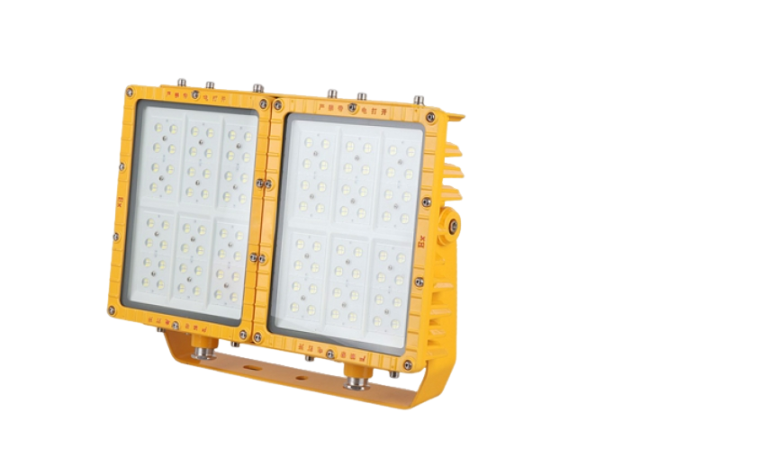Future-Proofing Industrial Lighting: Smart Sensors in Explosion Proof vs Flame Proof Systems
Bridging Safety and Intelligence in Hazardous Environments
Introduction: The Convergence of Safety and Smart Technology
Industrial lighting in hazardous environments—such as oil refineries, chemical plants, and mining operations—has long prioritized explosion-proof (Ex d) and flame-proof (FLP) certifications to mitigate risks.
However, the integration of smart sensor technology is revolutionizing these systems, enabling predictive maintenance, real-time hazard detection, and adaptive energy management.
This article explores how intelligent sensor integration reshapes the capabilities of explosion-proof and flame-proof lighting, offering actionable insights for safety engineers and facility managers navigating Industry 4.0 demands.
1. Technical Challenges in Sensor Integration: Industrial Lighting
A. Explosion-Proof Systems: Pressure Containment vs Sensor Sensitivity
Thermal Management: Ex d enclosures, designed to withstand internal pressures ≥1.5MPa, often trap heat from high-power LEDs. Smart thermal sensors (e.g., infrared or fiber Bragg grating) must operate within strict temperature limits (≤85°C) to avoid false alarms while ensuring ATEX/IECEx compliance.
Signal Interference: Metallic enclosures can attenuate wireless signals. Solutions include wave-guide antennas and shielded Ethernet cables, as seen in offshore oil rig deployments where 5G-enabled sensors maintain connectivity in Zone 1 areas.
B. Flame-Proof Systems: Combustion Resistance vs Sensor Durability
Material Degradation: FLP coatings (e.g., nano-ceramic layers) resist external flames but may delamulate under humidity. Embedded humidity sensors with self-diagnostic algorithms alert operators to coating failures, as implemented in LNG storage facilities.
Dust Penetration: In Zone 22 grain silos, particulate-resistant optical sensors monitor lumen output degradation, triggering automated lens-cleaning mechanisms.
2. Smart Sensor Applications Across Industries
A. Predictive Maintenance in Petrochemical Plants
Vibration Analysis: Accelerometers in Ex d floodlights detect abnormal motor vibrations in pump systems, reducing unplanned downtime by 35%.
Gas Leak Detection: FLP fixtures with integrated methane sensors (≤1ppm sensitivity) activate ventilation systems within 0.5 seconds, as tested in a 2024 Texas ethylene plant upgrade.
B. Energy Optimization in Mining Operations
Adaptive Dimming: Motion sensors in explosion-proof LEDs adjust brightness based on worker proximity, cutting energy use by 50% in South African gold mines.
Battery Health Monitoring: IoT-enabled sensors in portable FLP lamps track lithium-ion charge cycles, preventing thermal runaway risks in underground coal mines.
3. Certification and Interoperability Hurdles
A. Divergent Standards
ATEX/IECEx: Require intrinsic safety (Ex ia) certifications for sensors in Zone 0, limiting power to <1.3W. Hybrid systems using energy-harvesting sensors (e.g., piezoelectric) bypass this constraint.
NEC/UL: Focus on physical durability over data integrity, creating gaps in hybrid gas/dust environments. Dual-certified systems, such as Valmet’s DCS-integrated lighting, combine UL 844 and IP66 ratings for North American refineries.
B. Data Security in IoT Networks
Encryption Protocols: AES-256 encryption in wireless sensor networks prevents cyber intrusions, critical for lighting systems linked to plant-wide DCS platforms.
Edge Computing: Onboard processors in FLP fixtures analyze sensor data locally, reducing cloud dependency and latency in remote offshore platforms.
4. Future Trends: AI and Sustainable Materials
A. AI-Driven Hazard Prediction
Machine learning models trained on thermal imaging data from FLP fixtures predict equipment failures 72 hours in advance, as piloted in a Norwegian LNG terminal.
Digital twin simulations optimize sensor placement in Ex d systems, reducing physical testing costs by 40%.
B. Eco-Friendly Innovations
Self-Healing Polymers: Microcapsules in sensor housings repair cracks caused by thermal cycling, extending maintenance intervals by 50%.
Bio-Based Sensors: Graphene oxide sensors derived from lignin offer flame resistance without halogenated compounds, aligning with EU REACH regulations.







